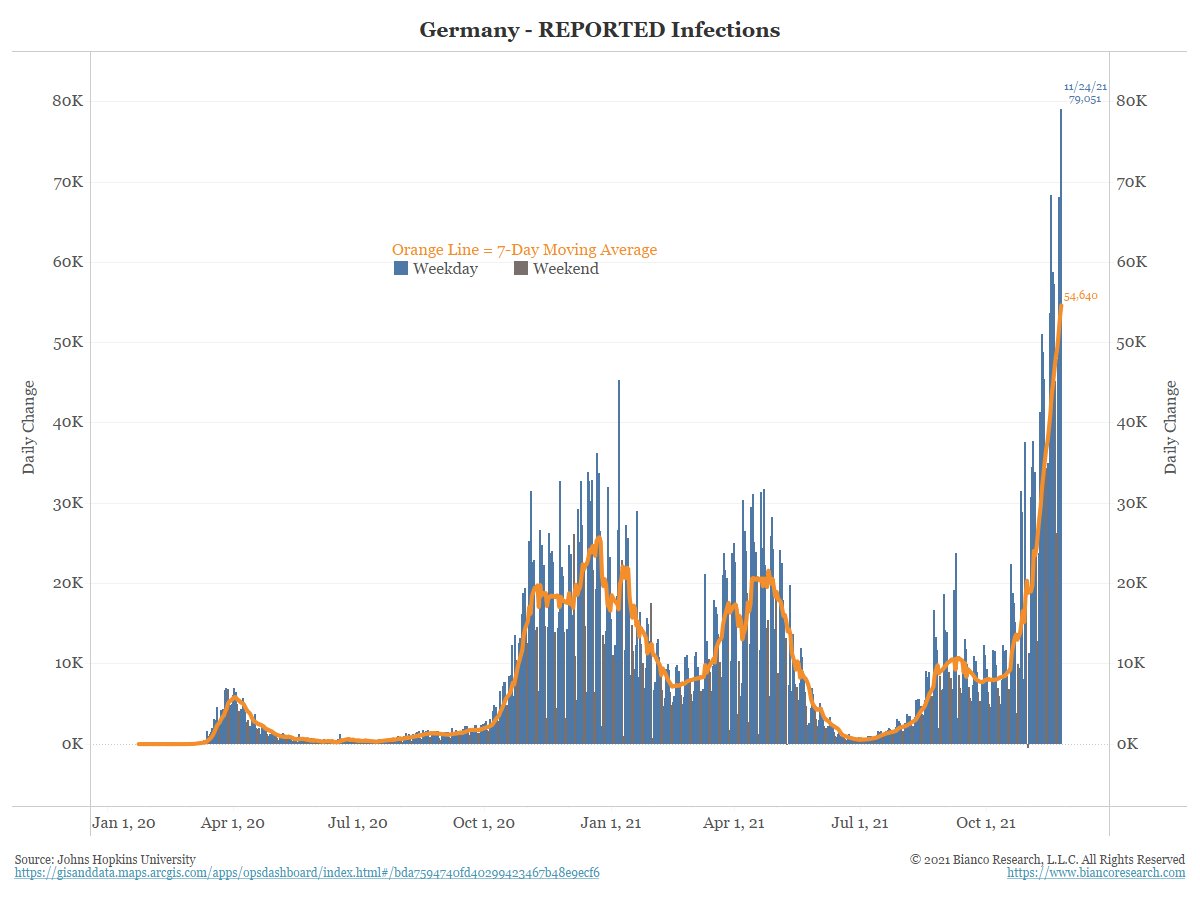
1/3
Lost in the news this week has been the huge "kink" in the T-Bill yield curve between Dec 15 - 23. This is not a year-end problem as that would be a Dec 31 kink.
The market rapidly pricing in a technical default.
Notice how much it has moved since Monday (Nov 30).
Lost in the news this week has been the huge "kink" in the T-Bill yield curve between Dec 15 - 23. This is not a year-end problem as that would be a Dec 31 kink.
The market rapidly pricing in a technical default.
Notice how much it has moved since Monday (Nov 30).

2/3
Back on Oct 5 (orange) the T-Bill curve also had a big "kink" anticipating a technical default, then expected to be Oct 18 (or 12 days away). The next day Congress passed a $480 billion increase in the Debt Ceiling, extending it to "late December."
Back on Oct 5 (orange) the T-Bill curve also had a big "kink" anticipating a technical default, then expected to be Oct 18 (or 12 days away). The next day Congress passed a $480 billion increase in the Debt Ceiling, extending it to "late December."

3/3
Now (blue above) the "kink" is even larger than Oct and instead of being 12 days away, the market has this more fear of a technical default priced in 13 to 19 days away.
The market's message ... "buckle up, it's coming."
And every day this fear grows and grows.
Now (blue above) the "kink" is even larger than Oct and instead of being 12 days away, the market has this more fear of a technical default priced in 13 to 19 days away.
The market's message ... "buckle up, it's coming."
And every day this fear grows and grows.
Also, if you follow this story in Washington, and the toxic partisan nature of our politics, and how members of congress detest voting for an increase, as it kills re-election chances ... it is understandable why the market is afraid a technical default is coming.
• • •
Missing some Tweet in this thread? You can try to
force a refresh



















